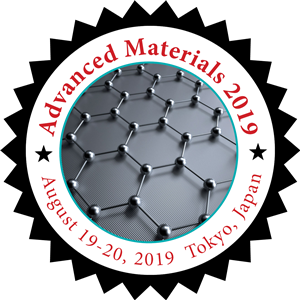
Tetiana Dudka
Shanghai University, China
Title: Tunable Fluorescence Anisotropy Of Lead Halide Perovskite Nanorods By Anion Exchange
Biography
Biography: Tetiana Dudka
Abstract
Emission spectra of CsPbX3 (X – halide anion) perovskite nanocrystals can be tuned by the composition based on different ratio of anions. The anion-exchanged perovskite nanocrystals that can be obtained by substitution of Br- in CsPbBr3 to Cl- or I- have been reported for quantum dots with a goal to tune emission wavelength, manipulate optical bandgap and improve their optoelectronic properties. It was demonstrated that the addition of iodide anion improves the polarized emission even for a cubic structure, which is favorable for LED and LCD applications. However, the achieved fluorescence anisotropy was not high enough and thus remains a challenge for perovskite nanomaterials. Perovskite nanorods with elongated shape are suitable candidates to provide higher fluorescence polarization compared with quantum dots. We realized a direct synthesis of CsPbBr3 nanorods via the crystal phase transformation, and, by conducting partial anion exchange from Br- to I-), we demonstrate enhancement of the fluorescence anisotropy of mixed-anion CsPbBr3-xIx nanorods from 0.02 to impressive values of 0.1-0.35. The reason for an improved fluorescence polarization of perovskite nanorods is due to the distortion of the original orthorhombic phase of CsPbBr3 by larger size iodine anions, which breaks the space inversion symmetry of the structure. Regarding bonding electrons as anisotropic harmonic oscillators, the introduction of iodine atoms make the whole structure more ionic and aligns those oscillators in one direction, thus enhancing the fluorescence polarization.

